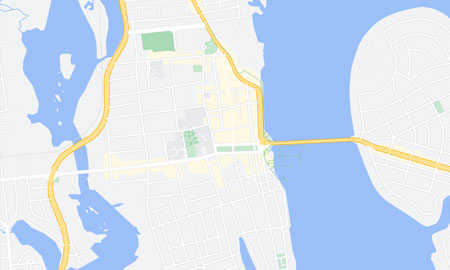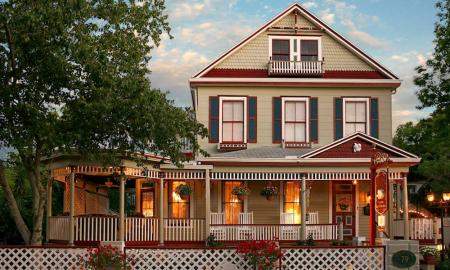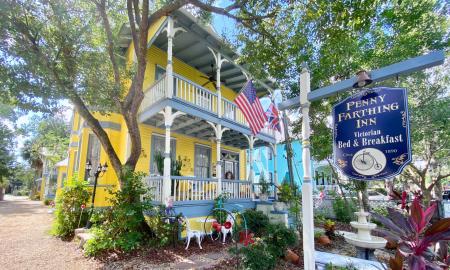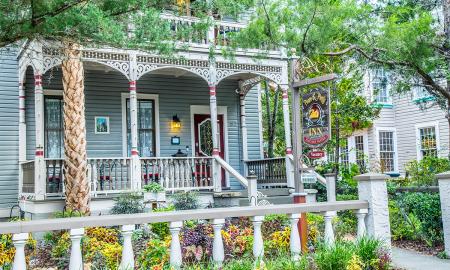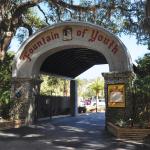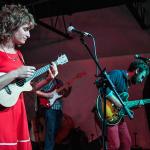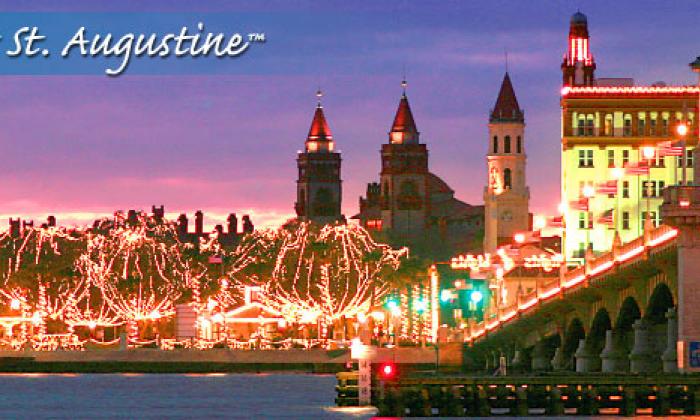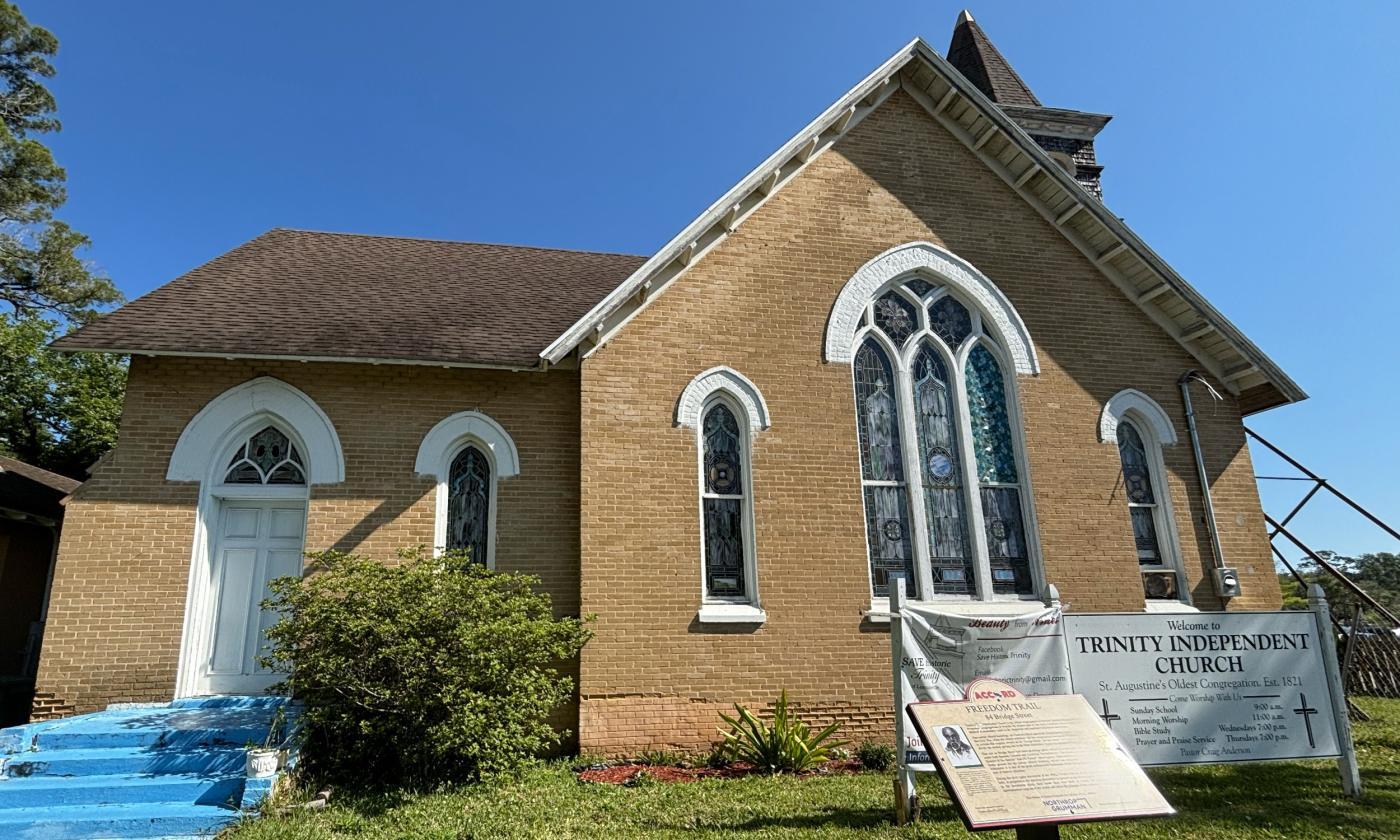
Trinity United Methodist Church
A Lincolnville Cornerstone
Established in the 1820s and housed on 84 Bridge Street since 1913, Trinity United Methodist Church stands as one of the oldest historically Black churches and one of the oldest Protestant congregations in Florida. Located in Lincolnville, it was established during the American Territorial Period in the 1820s. The church has long served as a spiritual and civic anchor for St. Augustine’s African American community.
From Orange Grove to Sacred Ground
The land on which Trinity stands once belonged to Philip Edinboro, a free Black resident during the Second Spanish Period (1784–1821). Edinboro, the son-in-law of fellow free Black leader Antonio Proctor, cultivated an orange grove and worked as a butcher and trade negotiator between Spanish officials and Seminole tribes. When Florida transitioned to American control in 1821, Edinboro and Proctor remained in St. Augustine, laying the groundwork for generations of free Black enterprise and land ownership in what would become Lincolnville.
Founding and Flourishing
Though the exact founding date of Trinity United Methodist Church is unclear, records indicate the congregation was active by the mid-19th century, initially including both Black and White worshipers. By the post-Civil War era, Trinity had become a central institution for St. Augustine’s growing community of formerly enslaved people and free African Americans. In 1913, the present-day church building was completed. Today it's a symbol of self-determination and shared faith in the heart of Lincolnville.
A Home for Reverend Jack Smith (Sitiki)
One of the most revered figures in the church’s history is Reverend Jack Smith, also known by his African name, Sitiki. Born in Africa and enslaved as a child, Sitiki was brought to America and eventually freed. He became the city’s first Black Methodist minister and a guiding spiritual leader. His oral histories were later recorded by historian Buckingham Smith, and in 2015, his life story was published in The Odyssey of an African Slave, giving voice to one of St. Augustine’s most important African American figures.
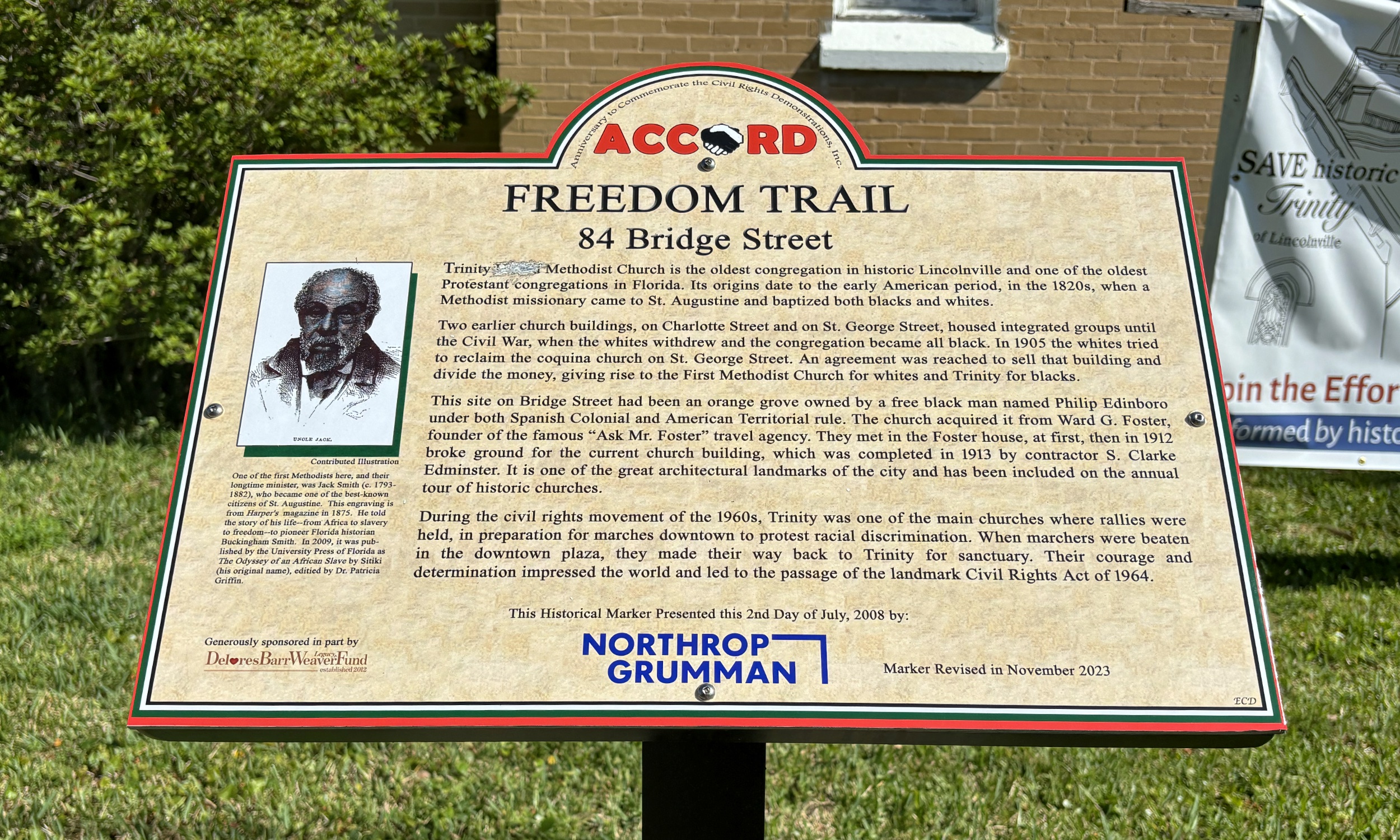
A Crucible of the Civil Rights Movement
During the 1960s, Trinity United Methodist Church played a key role in the St. Augustine Civil Rights Movement. Civil rights leaders and demonstrators gathered at the church before marching to the Plaza de la Constitución, and when tensions flared, Trinity served as a safe refuge. A Freedom Trail marker outside the building honors the church’s role as a base of nonviolent resistance and justice.
Visitor Information
The church is currently working to repair and restore its facilities.
Explore More
To learn about other sacred and historic sites in the nation’s oldest city, visit our Historic Churches page.

